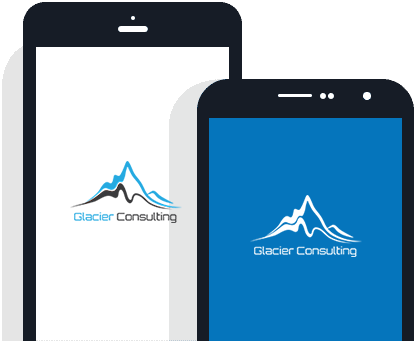ISO 14001
Interesting Facts You Need to Know About ISO 14001 Standard
ISO 14001 Consulting aims to facilitate the implementation of ISO 14001:2015, the latest standard in the ISO 14001 series, which outlines the criteria for an environmental management system. This standard is part of the broader ISO 14000 family, designed to assist organizations in managing their environmental responsibilities effectively.
Intended for any type of company or organization, it offers certainty to a company and its staff, as well as to its stakeholders that their organization is measuring and improving its environmental impact. Rather than creating environmental performance requirements, it offers a structure that a company can follow through.
As part of the ISO 14000 family of standards on the environmental management system, ISO 14001 2015 can be certified by an organization. And if integrated with other management systems such as ISO 9001, it can further enhance the possibility of achieving organizational objectives.
What is the purpose of ISO 14001 2015?
Just like any other ISO management system, ISO 14001 includes the importance of continuous improvement of a company’s approach to environmental concerns. It also encourages better environment-friendly products and services from suppliers.
WHAT ARE THE BENEFITS OF THE ISO 14001 STANDARD?
Enhances your credibility and overall image
If you have contracts that require you an ISO 14001 2015, then obviously, this is one of the great benefits. And in case that it is not a requirement, you can still benefit from it. Most of the time, your community, clients, and neighborhood will be curious enough about how you show your care for the environment and surroundings.
On the other hand, consumers are interested in learning the environmental performance of the businesses or organizations that create the products they consume. If you can assure all these individuals about your commitment to providing a positive environmental impact, then you should be able to show them an effective environmental management system that would identify and empower these impacts. As a result, this action will significantly improve your public image which will eventually lead to the enhancement of your ROI.

Reduce waste
Maybe you’ve already seen documentaries showing birds with plastic in its beak, plastic waste found in turtle’s stomach, and other careless actions that affect our wildlife and ocean habitat. The problem is global, and it is hard to begin and figure out where to begin. But it would be a great start if every organization launched an effective environmental management system (EMS) such as waste reduction and waste packaging.
Whether a requirement or not, every company and business can support by conveying to their staff the importance of limitation in plastic usage.
Reduction in environmental impact
This the main reason why every business must implement management system standards. This will also serve as a reminder that each of us must commit ourselves to protect our environmental aspects by avoiding pollution and continuously enhance the air we breathe, the earth where we live, and the water that we drink. Reducing the impact on the environment also means reducing waste and resource consumption, hence, lowering the operational cost.

Does ISO perform certification?
Although you’ll always hear “ISO Certified”, the truth is, ISO itself does not issue certificates or certify individual businesses. External certification bodies, which are independent of ISO are the ones who perform the certification.
ISO certification attests that a management, manufacturing service or process, or documentation procedure has completed the requirements for quality assurance and standardization.
Who should use ISO 14001 2015?
Being certified with ISO 14001 standard brings benefits to any organization. Specifically, ISO 14001 2015 applies to any organization, whether small, medium, or large-scale. It typically applies to the environmental aspects of products and services whether a company can empower a life cycle standpoint. ISO 14001 2015 can be utilized to improve environmental management.
What are the requirements of ISO 14001?
In reality, there are no requirements on how you should implement ISO 14001 within your company. But an auditor instead will be the one who will look for documented proof that you really have an efficient environmental management system, and it is properly in line with the existing standard.
What are the documents needed for ISO 14001 standard?
Although ISO 14001 requires you to keep documented proof that your EMS satisfactorily meets the standard, the way you operate and the way you document your evidence is not prescribed by the standard itself. But bear in mind that the objective of your documentation is to make sure that a tough environmental process is being observed by your organization.
The following documents will help you in manifesting your whole organization’s awareness about your environmental goals, which eventually will help you in reaching your environmental objectives.
- Scope of the Environmental Management System – this document requires the company to fully understand the internal and external concerns that might have a positive or negative impact on the organization’s performance. It includes the company’s structure and culture, market competition, and other external environments that are significant to its performance.
The Scope of the Environmental Management System also requires an organization to recognize significant parties, their demands, and expectations.
- Environmental Policy – this is a policy that closely relates our interactions with our surroundings, especially our environment. Its main objective is to reduce pollution and continuous improvement. It must clearly demonstrate your company’s dedication to any actions that will lessen environmental impact.
- Method for Proper Identification of Environmental Aspects– for your environmental performance to effectively work, you must be able to learn which parts of your organization have environmental aspects and what is their environmental impact.
Some examples of environmental aspects include, but not limited to:
- Utilization of natural resources such as water or energy
- Using recycled materials
- Proper disposal of waste materials, including wastewater
- Any potential risk for pollution including spills and leakages, among others.
- Compliance Evaluation Record – One of the best ways to ensure that your organization is successfully complying with its obligation is to record the results. Producing these records will demonstrate that the organization is:
- Evaluating the compliance
- Taking the necessary action if required to do so
- Religiously updating its compliance status record
- Results of Internal Audits– it is often called first-party audits are conducted by the company itself for the purpose of management review and other internal reasons. Internal audits must be conducted to a procedure in accordance with ISO 14001 internal audit.
Barriers to entry
Over time, sustainability has had its greater impact on organizations and consumers across the globe. But acquiring ISO 14001 certification can be costly particularly for small and medium-scale businesses. However proper research about the cost including the annual, external, and internal audits, consulting, and the time and effort to stay in compliance will predict some of the costs you will incur.
It is also worth noting that the tasks involved to implement ISO 14001 management system are also one of the barriers to be considered. Internal audits should be carefully considered to confirm that the environmental management system complies with the ISO 14001 standard. The result of the internal audits is then used to make the necessary adjustments to existing products and services, as well as to the environmental performance.
When you finally have a realistic estimate of what is all of the costs to be considered annually, you might want to pause for a while and have a second thought of it. Yes, it may not be as cheap as you think, but remember that the costs to obtain and implement ISO 14001 certification is not all that it has to offer; it provides the benefits mentioned earlier.
Final words
To ensure that you have an effective environmental management system you must obtain information from the people doing the work. Additionally, you might also need to consult third parties such as consumers, registrars, lending institutions, and the public as a whole, to properly explain to them how your environmental performance operates.
Quality management is of utmost importance if you want to stay in compliance. ISO 14001 standard is composed of practical tools that provide assurance to company management in terms of an effective environmental management system.
In response to the growing need for standardization of companies or organizations, the ISO 14000 family was developed. This set of management system standards offers cost-effective and practical tools that can be efficiently used in applying the right knowledge on how to improve environmental impact.
Other international standards for an effective environmental management system emphasize specific approaches such as communications, external and internal audits, life cycle analysis, and climate change. And to improve environmental impact on your organization, there must be an assurance to company management that these practical tools are being adopted to successfully implement management system standards.
Frequently Asked Question
ISO certification follows the same process, regardless of the ISO standard you are seeking:
- Establish, implement and verify your ISO management system
- Stage 1 audit – Documentation Review
- Stage 2 audit – Full system audit
- Closure of any findings
- Certification!
The standards that best suit your company vary by the industry you are in. In order to identify the standards that will provide your company with the greatest benefits, we recommend the following:
- Talk to your customers – many of them may require certain ISO standards.
- Evaluate your companies risks – see where your companies great liabilities are what needs to be controlled (e.g. quality, environmental aspects, health & safety hazards, IT security, etc.).
- Be proactive and identify new business opportunities – evaluate new areas / industries you want to grow your business. Often times, these new industries may require some sort of certification in order to enter. Certification takes time, so being proactive and having the certifications before bidding on projects can put you ahead of your competition.
The time to become ISO certified really depends on a few different factors:
- The resources you have available to support the ISO process
- Your own internal timeframe that you need / want to be certified by
- The standard’s requirement for how much evidence you need to support certification
Certification requires you to show through objective evidence that you have an effective ISO management system in place. In order to do this, you need to show that you have sufficient evidence available to support this claim. At a minimum, most standards will require 3 months of evidence of implementing your management system in order to be certified.
Some standards, such as IATF 16949, may require a minimum of one year of evidence to support certification.
The cost for certification can vary greatly from one company to another. There are typically several factors that go into the costs for certification:
- Certification body fees
- Certification body audit day rates
- Auditor travel costs
- Standard license fees (e.g. R2, RIOS, eStewards license fees)
- Consulting Fees
Audit time and consulting time is typically based on the following factors:
- Number of employees
- Number of processes and the risks associated with those processes
- Number of locations
We have the experience to help you navigate the certification body costs and possible discounts they can offer.
You can Request a Quote here or get an Instant Quote here
ISO certification shows your customers that you follow industry best practices and that your business is well structured and ready for growth.
Each ISO standard has its own benefits, for example:
- ISO 9001 – Ensures you provide your customers with a quality product or service
- ISO 27001 – Protects your information, data and reputation
- ISO 14001 – Reduces your environmental impact
- ISO 45001 – Protects your workers
- Responsible Recycling (R2) – ensures responsible management of used electronics
Common benefits across all ISO standard include:
- Increased efficiency
- Reduced costs
- Improved customer satisfaction
- More engaged employees
- Reduced risks
- Reduced insurance premiums
- Helps with project bidding
By achieving and maintaining an ISO certification, you are showing your company’s commitment to achieving your objectives, improving your business and increasing the credibility and customer confidence in your product or service.
Yes. We have been providing remote auditing and consulting services for years. We have found remote auditing and consulting to be just as effective as on-site. We use a variety of tools to ensure we are thorough in our remote services, while saving you time and money.
The great thing about working with Glacier consulting is that you don’t need anything in place to get started. We will work with you ever step of the way to ensure you have everything you need to get certified.
Most companies have far more in place than they realize. Just because it may not be documented, doesn’t mean you don’t have processes in place. We will work with your team to improve, streamline and formalize these processes.
One of the most common questions we get is how much time and effort does it take to get and maintain certification. The bulk of the effort should be at the beginning to get your management system established and implemented. To do this, we take what you already do and formalize it to meet the standard requirements. There may be some minor tweaking done, but this typically only improves and streamlines your process.
Once your ISO management system is in place, maintaining it should be as easy as breathing because it should become part of your culture and everyday operations. At the end of the day, you shouldn’t think of it as your ISO system, you should think of it as simply your way of operating your company.
We work with countless ISO standards. We’ve only listed the most common ISO standards typically sought after. We have a diverse team with tremendous knowledge in many of the ISO standards. Contact us and let us know what standard you are interested in. If we don’t offer that service, we can find you someone who can.
We can tailor a service specific to your needs to help you along your ISO journey. We can provide basic guidance to full “White Glove” support. If it’s business or ISO related, we’ve got you covered. A few of our services include:
- General ISO Consulting
- Documentation Prep
- Training
- Auditing
- Maintenance
Contact us with any questions you have or for services not listed here.


